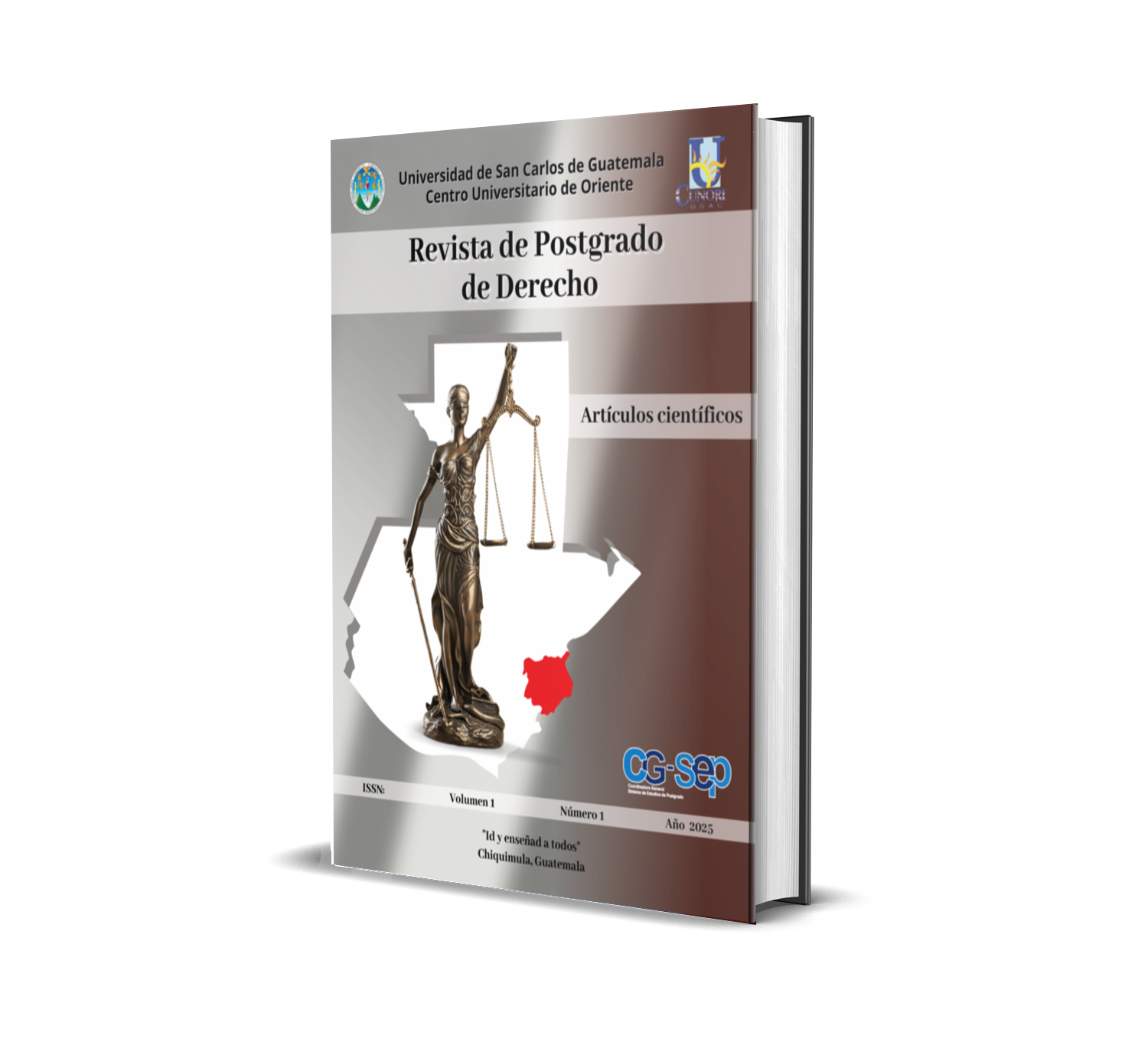Restorative justice in crimes against life: comparative analysis in guatemalan Criminal Law
DOI:
https://doi.org/10.36314/postgradosderecho.v1i1.3Keywords:
restorive justice, crimes against life, comparative criminal law, recidivism, traditional practicesAbstract
OBJECTIVE: to describe restorative justice in crimes against life in Guatemala, comparing it with other legislations. METHOD: a qualitative methodology based on exhaustive documentary analysis of legal documents, jurisprudence, and academic literature was used. The sample included relevant texts from Guatemala and other Latin American countries, such as Argentina and Mexico. RESULTS: restorative justice in Guatemala offers a viable alternative for conflict resolution in crimes against life, focusing on damage repair and offender reintegration. Despite being recognized in the Penal Code and the Criminal Procedure Code, it faces practical implementation challenges, such as lack of resources and adequate training. In comparison, countries like Mexico and Costa Rica have effectively integrated community participation into their programs, enhancing the perception of justice and reducing recidivism. Traditional indigenous practices in Guatemala also show potential for adaptation to the modern penal system. CONCLUSION: the research underscores the need to strengthen the regulatory framework and promote continuous training of justice operators to ensure effective implementation of restorative justice in crimes against life in Guatemala. Integrating traditional practices and community participation is essential to enhance its benefits, reduce recidivism, and improve damage repair.
References
Congreso de la República de Guatemala, Ley Orgánica del Instituto para la Asistencia y Atención a la Víctima del Delito, Decreto 21- 2016. http://ww2.oj.gob.gt/es/QueEsOJ/EstructuraOJ/UnidadesAdministrativas/CentroAnalisisDocumentacionJudicial/cds/CDs%20compilaciones/Compilacion%20Leyes%20Penales/expedientes/19_LeyOrganicaInstitutoAAVD.pdf
Congreso General de los Estados Unidos Mexicanos, Ley Nacional de Mecanismos Alternativos de Solución de Controversias en Materia Penal. https://www.diputados.gob.mx/LeyesBiblio/pdf/LNMASCMP.pdf
Corte Interamericana de Derechos Humanos, Opinión Consultiva OC-9/87, 6 de octubre de 1987, Serie A No. 9. Recuperado de http://www.CorteIDH.or.cr/docs/opiniones/seriea_09_esp.pdf
Gobierno de Colombia (2023) “Enfoque Prácticas y Justicia Restaurativa” https://www.icbf.gov.co/programas-y-estrategias/proteccion-2023/justicia-y-practica-restaurativa
Instituto de Estudios Comparados en Ciencias Penales en Guatemala (s.f) Aproximación a las prácticas de justicia restaurativa en el sistema de justicia penal juvenil guatemalteco https://bice.org/app/uploads/2015/12/69.pdf
Márquez, A. E. (2007) La Justicia Restaurativa versus la justicia retributiva en el contexto del sistema procesal de tendencia acusatoria,Universidad Militar Nueva Granada. https://www.pensamientopenal.com.ar/system/files/2014/04/doctrina38589.pdf
Poder Judicial de Costa Rica (2021) “Avances de Justicia Restaurativa” https://justiciarestaurativa.poder-judicial.go.cr/evolucion
Prieto Molano, C. (s.f) “Prácticas de Justicia Restaurativa Juvenil con Elementos de la Cosmovisión Ancestral Americana. https://repository.usta.edu.co/bitstream/handle/11634/43212/2022carolinaprieto.pdf?sequence=4&isAllowed=y
Rodríguez Zamora, M. G. “La justicia restaurativa: fundamento sociológico, psicológico y pedagógico para su operatividad https://www.scielo.org.mx/pdf/tla/v9n39/1870-6916-tla-9-39-00172.pdf
Universidad en Internet (UNIR) (2022). La justicia restaurativa: la alternativa que apuesta por la mediación, ciencias de la salud. https://www.unir.net/salud/revista/justicia-restaurativa/
Zehr, H. (2010) “El pequeño Libro de la Justicia Restaurativa” https://www.icbf.gov.co/sites/default/files/el_pequeno_libro_de_las_justicia_restaurativa.pdf
Published
How to Cite
Issue
Section
License
Copyright (c) 2025 Elvia Agustín Jiménez

This work is licensed under a Creative Commons Attribution 4.0 International License.
Authors who publish with this journal agree to the following terms:
- Authors retain copyright and grant the journal right of first publication with the work simultaneously licensed under a Creative Commons Attribution License 4.0 that allows others to share the work with an acknowledgement of the work's authorship and initial publication in this journal.
- Authors are able to enter into separate, additional contractual arrangements for the non-exclusive distribution of the journal's published version of the work (e.g., post it to an institutional repository or publish it in a book), with an acknowledgement of its initial publication in this journal.
- Authors are permitted and encouraged to post their work online (e.g., in institutional repositories or on their website) prior to and during the submission process, as it can lead to productive exchanges, as well as earlier and greater citation of published work.





